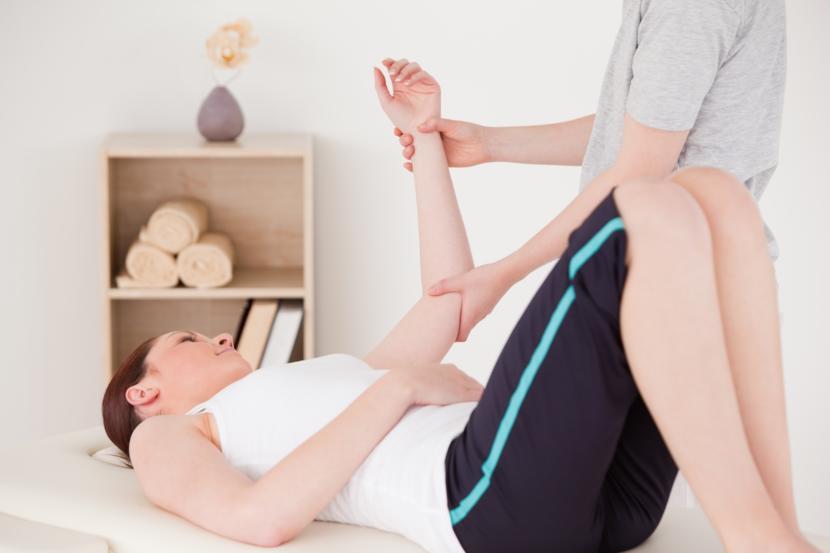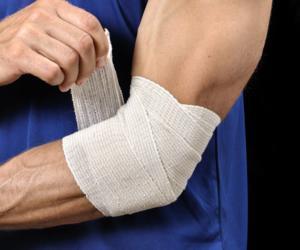Tennis Elbow: What to Expect At Physical Therapy

Tennis Elbow: What to Expect At Physical Therapy
Tennis elbow is also known as Lateral epicondylitis. It is painful muscle skeletal condition of the outer elbow. This condition is caused by overuse and/or repetitive use of the arm's extensor muscles.
Muscles, like any other material, wear and tear due to the repetitive use. It results in inflammation of the tendons that join forearm muscles. This occurs at the exterior region of the elbow. The damaged muscles and tendons from overuse result in pain and tenderness. The affected person experiences pain when gripping something or moving the wrist.
Causes of Tennis Elbow Disease
- Direct blows to the epicondyle
- Sudden application of force to the elbow
- Incorrect handling of some tools
To curb the effects of tennis elbow, doctors, physical therapists and surgeons work hand-in-hand to facilitate treatment.
What Happens During Diagnosis?
Upon visiting the hospital, the doctor may want to know how the symptoms you are experiencing first started in order to establish whether the illness in question is really tennis elbow.
One should be precise and mention his or her occupation. In addition, doctors may use a variety of tests to ascertain whether the condition is tennis elbow. This may include the following:
- X-ray scans.
- Magnetic Resonance Imaging scans.
Treatment of tennis elbow may include surgical and non-surgical treatment. Rest is the most viable option, but other options are available, including:
- Use of painkillers
- Use of tolls
- Physical therapy
- Icing
- Use of Non-Steroidal Anti-Inflammatory Drugs (NSAIDs)
- Cortisone injections
What Is Physiotherapy About?
Physiotherapy is the most effective treatment. It reduces elbow pain and facilitates the tissue repair and fixation of damaged muscles. In detail, physiotherapy entails:
- Gentle movement of neck and elbow joints
- Electrotherapy
- Elbow kinesio taping
- Strengthening and massage
- Stretching
- Cross-friction massage
- Heat and ice
- Ultra sound
- Elbow brace-it may be used to reduce pain while gripping object.
Before physiotherapy is administered, the therapist assesses the patient in the following areas:
- Pain
- Patient feedback
- Disability of arm, shoulder and hand
- Tenderness
- Strength of wrist and fingers
The therapy is 6 weeks long with 8 treatment sessions.
Signs of improvement may be experienced from the third week onwards. Physical therapy also helps strengthen arm muscles.
Other Available Treatment Options
Another type of therapy - known as 'shock wave therapy' - may be used. In this therapy, shock waves cause a small quantity of trauma or shock to the affected region. This significantly speeds up the healing process.
Surgery may be used as a last resort if all the non-surgical means do not bear positive within approximately 7 months. This may involve removal and replacement of the affected muscle with a healthier one.
During surgery, the following measures should be taken:
- Avoid causing infections. This may be achieved by using only sterilized equipment.
- Avoid causing loss of stability and flexibility of the limb
- Avoid rupturing blood vessels
After surgery, the following side effects may occur:
- Temporary immobility of the arm
- Reduction of the arm’s activity
Preventive measures may include:
- Reducing exertion by the arm if already injured
- Avoid rapid movement of the arm
- Use well-designed tools or equipment
- Early treatment
Causes may include:
- Unusual movement of the arm
- Too much squeezing by the fist
- Direct blow to the epicondyle
- Abrupt application of force
- Incorrect handling of tools
The Bottom Line
Physiotherapy is a treatment method that greatly helps in curing tennis elbow. Always consult your doctor in order to ensure that you are informed of the available treatment options so that you select the most suitable for you.















